Photo

Look what my dad jut txted me
0 notes
Text
To my Twenties a poem by Kenneth Koch
How lucky that I ran into you When everything was possible For my legs and arms, and with hope in my heart And so happy to see any woman-- O woman! O my twentieth year! Basking in you, you Oasis from both growing and decay Fantastic unheard of nine- or ten-year oasis A palm tree, hey! And then another And another--and water! I'm sill very impressed by you. Whither, Midst falling decades, have you gone? Oh in what lucky fellow, Unsure of himself, upset, and unemployable For the moment in any case, do you live now? From my window I drop a nickel By mistake. With You I race down to get it But I find there on The street instead, a good friend, X-- N--, who says to me Kenneth do you have a minute? And I say yes! I am in my twenties! I have plenty of time! In you I marry, In you I first go to France; I make my best friends In you, and a few enemies. I Write a lot and am living all the time And thinking about living. I loved to frequent you After my teens and before my thirties. You three together in a bar I always preferred you because you were midmost Most lustrous apparently strongest Although now that I look back on you What part have you played? You never, ever, were stingy. What you gave me you gave whole But as for telling Me how to best use it You weren't a genius at that. Twenties, my soul Is yours for the asking You know that, if you ever come back.
This poem makes me thank God Im only 22
I like how his different life spans hang out in a bar and have a conversation the thought of not being the same person through each generation. and able to converse wih each other and still share the same moments.
when we make something we are never who we are at that moment again. thats something special
0 notes
Text
Chris Marker
An interview question via email. I truly adore the answer it feels like an old man talking to a child and I do not mean this in a condescending way but and old smile image
Have your travels made you suspicious of dogmatism? "I think I was already suspicious when I was born. I must have traveled a lot before then!"
0 notes
Text
Some Readings
one patient suddenly begins to mistrust his sense of smell, another constantly hears childhood songs playing in his head, a third discovers the use of his hands after sixty years, etc.). These human beings, whose brains were somehow damaged by illness or accident, are not prisoners in their worlds any more than we are in our own, but living in our world, one so foreign to them, forces them into withdrawal. These people share their bodies, knowledge, and "souls" with us, but are unable to share the world itself. They are strangers in our universe, cognitive immigrants suffering from a terminal case of homesickness...
0 notes
Photo
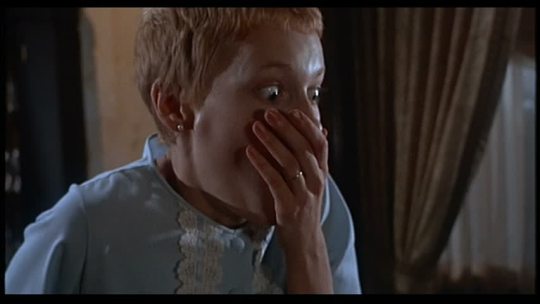

The frame above depicts the horrified Rosemary in the 1968 film Rosemary’s Baby. Rosemary has given birth to her first child and she has just noticed that the child is not of this world. Shocked and terrified Rosemary’s baby is far from normal as a cult of witches has impregnated Rosemary with the Anti-Christ.
Khristeva writes about the horrific female characters and their place in film and why they have become such object of horror for the male spectators. Rosemary becoming a mother herself must deal with idea of her child to grow up and eventually separate. However, in the movie this occurs much faster before the child has even left her body, even before Rosemary becomes abject.
Rosemary is forced to adhere to her husband, male doctor, and the crazy neighbor couple next door as she is made a subordinate to male dominant to society. She has no control of the health of her own body and child and becomes increasingly abject as she throws up and becomes weaker and a thinner corpse.
Rosemary tries to fight for her unknown demon babies life but is dominated by the witch cult and becomes separated from her child before it is out of the womb. Her unborn child is receiving a new identity by the cult secretly and Rosemary becomes more upset and more abject by the overwhelming patriarchal witch society.
Once the baby is born Rosemary is in full realization that the baby has broken away from her with the completion of a new identity. Rosemary then attempts to be a good maternal figure and refuses to give up the child. She then becomes the mother of the Anti-Christ, a monstrous feminine.
0 notes
Photo
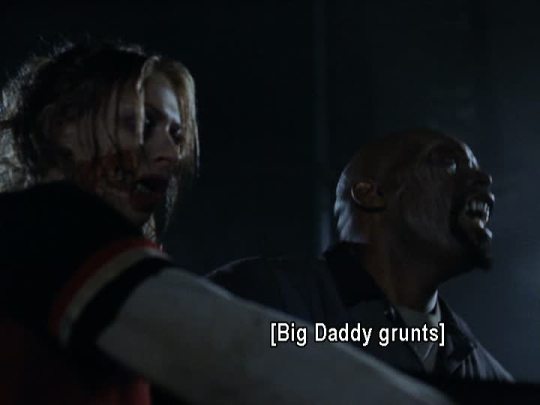
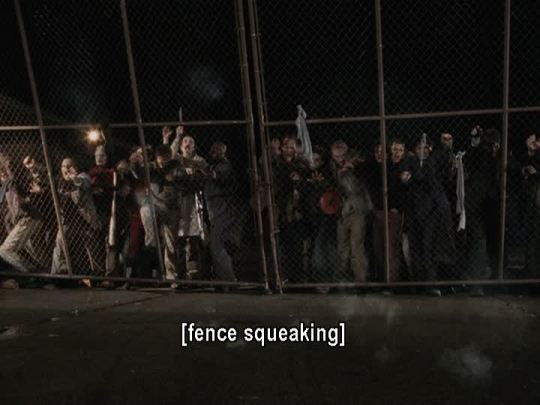

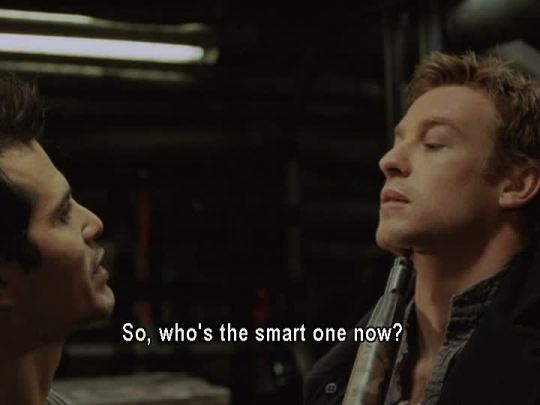
The Zombie genre has been around for over 40 years with the birth of Romero’s film Night of the Living Dead, yet the genre continues to use similar characteristics of the originals. Post 9/11 Zombie films however; have gained an eerie assimilation to the modern world issues such as terrorism, natural disasters, and immigration.
Romero’s 2005 Land of the Dead as always continues to keep the zombie look: Post apocalyptic backdrop, collapse of societal infrastructure, violent deaths, and the fear of companions. Romero over the years has invoked fear through the idea of death personified but now this world he has created is becoming a reality. Zombies themselves have become progressively more realistic and frightening. In Land of the Dead the Zombies begin to even act like humans! Their rotting brains are beginning to function again and they are becoming a much larger threat to the human race. Zombies once an animal like creature to avoid can now think plot and act like humans. In the original Zombie films the humans were a bigger fear then the actual Zombies themselves.
With the destruction of capitalism in the post-apocalyptic world everything becomes a free for all. Therefore human indecency and deception such as murder and rape become the biggest fear in this dog eat dog world. But now the zombies themselves are obtaining this level in the Land of the Dead. Only weird thing is that the zombies seem more moral than the humans (protecting each other, working together to get into Pittsburg).I suppose this is the beginning of the reconstruction of world.
After September 11th the film dawn of the dead begins in chaos; unknown explosions, things falling from the skies, neighbors killing neighbors it is a symbol war scene. In 28 Days Later there is images of an empty London cityscape. After 9/ll the images fit in all to eerily. Admittedly the scenes were inspired by horrific disasters like the Killing Fields in Cambodia or Hurricane Katrina. So what does an audience think after post 9/11?
Post September 11th the audience sees resemblance of the Zombie, terrorist convert others to their deadly cause. Suicide Bombers and hijackers are scene as loss of human morality. In Land of the Dead class division and immigration are emphasized. The American people immediately after 9/11 feared the secrets and hold ups of the government. The people after 9/11 was told to continue as normal and act like nothing happen so that we do not give into terrorist. Much like in Land of Dead where the rich hide up in their tower while the poor must suffer the reality. The rich also barred fences to the city and would kill any intruder in an instant what does that say about Bush administration immigration laws?
The images above are clips from Land of the Dead -Zombies getting smarter working together -Loss morality in humanity -Aristocracy corruption -Immigration ideals
0 notes
Photo

The classic 1954 film Gojira survives as one of the first films to represent the portrayal of Japanese feelings toward the Atomic Bomb. Gojira represents the tragedy of the atomic bomb by repeating similar trauma on a city landscape. Gojira lies deep in the ocean and is awaken due to the human creation of the bomb. This angered Gojira and the balance of nature and the monster unleashes godly power on Japan.
The bombs in a sense actual create Gojira’s destructive forces. Gojira then sets out to punish the humans and after enough suffering the humans get together and peace is restored to the land. What I find interesting about the movie is the idea that all protagonists are not completely innocent. Sontag writes about how about there is no complete innocence thus implying the guilt of the creation of the nuclear bomb. The character Serizawa is the character I believe, with the most guilt. Serizawa created a new bomb to destroy Gojira but this also meant the possibility of human miss-use of the new hydrogen bomb. Serizawa could not Bring himself to use it until Emiko who overrun for knowing this secret filled with guilt told the higher ups about Serizawa’s power. I believe in a way Emiko uses Serizawa and her womanly right to use the bomb to regain human power over Japan. (Just as the bomb was used to enforce American power)
The guilt in these characters eventually leads them to use the bomb themselves. Yet, honorable Serizawa kills himself in the process so no one could ever make another bomb. Thus, balancing power in the world again. Serizawa is also the representation of old Japan values while the others who survived represent the new aged technological Japan.
2 notes
·
View notes
Photo

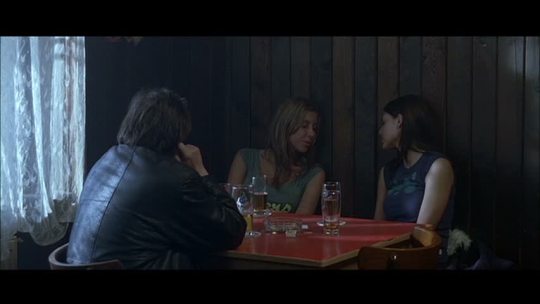

The 2005 film Hostel is a movie filled with political, economic, and cultural references to post 9/ll America and the “War in Terror”. Hostel can be seen as a comment on the brutality of America. The most recent historical reference is to the torturing of prisoners at Abu Ghraib by Americans. These images shocked and destroyed America, as there is no excuse. Some attempt to defend the soldiers trying to explain it as war prizes or the rational for westerners to cleanse and fix less privileged countries. (The set up of a democracy in Iraq)
Torture is linked to aristocracy, yet aristocracy is linked to ethical behavior. Aristocracy is seen as western identity in the world. America’s powers led to misuse and now they are viewed as torturers around the world. In Hostel the main characters are Westerners and have lived a more than privileged life as the back-pack around Europe jumping from brothel to brothel to consume. The horror of Hostel is that their privilege life to consume leads them to become objects to be consumed. The main characters head to Slovakia as they are told that are American’s are desirable. Their western identity as the hero of a foreign less privilege country overwhelms the boys and they leave without any concerns.
They come to a Hostel with beautiful girls that seduce them names Svetlana and Natalya. These characters to me are defining in the movie that shows the naivety of the western protagonist in a foreign country. The girls are beautiful with make up and are in a hostel playing dubbed American movies. They are a symbol of safety for the protagonist. They are the male fantasy women who are looked after by the “heroic” Americans. Paxton after the loss of their friends finds the two women in a shady pub looking haggard sitting with a creepy guy. Their foreignness is no longer exotic and erotic but threatening as they separate him with a language barrier and by physically being on the other side of the pub.
The film has many duality role reversals. The most terrifying being the destruction of Paxton’s western identity; Svetlana takes Paxton to the “art show”. Paxton becomes the object for Svetlana to consume (he is captured) and Paxton has loss the consumption of the foreign fantasy.
0 notes
Photo
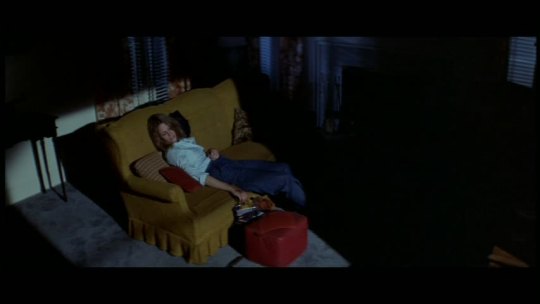
One of the first slasher films, Halloween is a pinnacle point in film history creating a female character who is the "Final Girl". This character disrupts the male gaze and creates a female active gaze that controls the finishing product of the film. This final girl is alert, asexual, cautious, intelligent, and mechanical like the main character Laurie.
Laurie the bookworm is the final girl compared to her sexualized and punished friends. The film creates the patriarchal mental identity of a strong powerful man (or an alert intelligent doctor) and female characters that are very feminine and passive. Laurie however is gender bending heroine who has the patriarchal mentality of a male such by being aware and the use of a phallic tool to kill Michael.
The clip above is the scene where Laurie kills Michael the first time and she feels safe and drops the large penetrating knife. While Halloween is the beginning of the female gaze and the “final girl” in horror cinema, Laurie is still a passive female at the end of the film. Her gaze is not as powerful as Michael’s gaze. She is unable to foresee Michael’s attacks and cleverness. Laurie's first attack is with a feminine knitting needle and Michael falls. Laurie picks up his knife and rejects it and drops it to the ground. She is in a sense rejecting the phallic masculine weapon of violence; therefore she cannot yet defeat the masculine Myers.
Halloween is the beginning of the progression of female gaze but it does no embody the full on female gaze. Laurie continues to use female and household items to stop Michael or harm him. Laurie turning the coat hanger into a sharp tool jabs Michael in the eye. This finally disrupts the male gaze and Laurie stabs Michael with the knife. Once again Laurie drops the knife rejects the male role and is attacked again. The Dr comes in to save the day but before then Laurie unmasks him he is a seemingly normal mean with an injured eye. This displays that he is now like Laurie and unlike the Dr in the fact that his male gaze is less than fully functional at the moment (Connelly 17).
7 notes
·
View notes
Photo
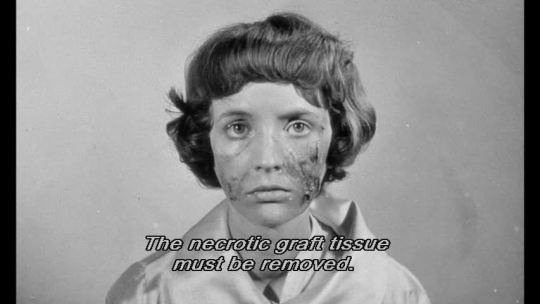
Eyes Without a Face or Les yeux sans visage is a French poetic medical horror film from 1960. The film follows a father and daughters disturbing relationship that strives for perfection. The father is a clinical doctor named Dr. Genessier who has destroyed his daughter's face (Christian) in a car accident. Having the surgical skills and tools Dr. Genessier is fueled with a patriarchal desire to restore Christian's "true face". The mad doctor does this by kidnapping women with similar beauty and taking their skin from their face and placing it on his daughters. The women who have their face taken often die in some way or another.
The film has a very deep underlying content of WWII and the Nazi regime. The image above is Christian's new face deteriorating after time after the failed surgery. Before the Doctor gives her this new face he tells her "vrai visiage" a term used often in by french Nazi sympathizers when they talked about fighting the Jews to restore France's "True Face" (Hawkins 70). The skin rejecting Christian must be removed says the doctor referencing what I believe the Jewish removal by the Nazis to create a pure ethnic and racial world. Or in Christian's case face must be removed for another attempt at purity (a new face)
This is not the first attempt and failure on the restoration of Christian's face by the doctor. Resembling a German the Doctor like many Nazi Germans do ask contemplate how many people must be killed and tortured to regain purity.The patriarchy guilt for harming his daughter translates to the physical punishment to another woman's body. This is the horror of the film the relationship between sadistic Nazi medical practices and "paternal devotion" (Hawkins 71). The rejection of the skin on the depressed Christian resembles the humiliation of women who worked with the Nazi sympathizers in France.
21 notes
·
View notes
Photo
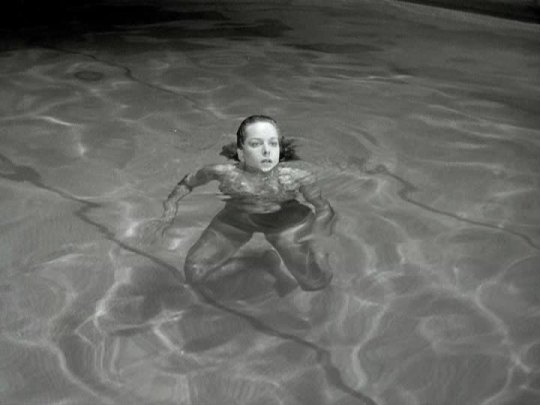
Classic 1942 drama-horror film, Cat People is not only a good watch but in depth look on gender roles and homosexual repression from Americanization and various cultures. Immigration to the United States at the time when the movie was being filmed was the immigration Era of restriction. This means laws for approval to be a citizen were at a much higher standard than a previous time.
The main character of Cat People is centered on Serbian immigrant, Irena. Due to Serbian fables on demonic Satan worshipping cat people, Irena fears that she might become a large cat herself and endanger her husband if they become intimate. This is the set up for Irena’s possible repression of homosexuality in America. The Christian, King John, drove out the Cat People in Serbia. Christianity plays a major role for the repression of many natural desires. Christianity for the time period represents “Good” and the proper way to live life.
Irena’s fear of being a cat person is real because she cannot change who she is no matter how hard she tries to escape it (leaving home). The scene during her wedding dinner party she as seen as an equal to cat like person. The cat like lady is alone regal and beautiful. This shows the advantages for Irena if she chose to be a non-heterosexual. The shot between the two women interrupts the heterosexual gaze of the wedding party. Irena from then on is frightened she will become a cat person.
The still image above is a shot of Oliver’s friend terrified at the sight of Irena who had been stalking her as a panther (dominate male icon) all night enraged at the the loss of the heterosexual life. This scene is very erotic as Alice is in her bathing suit helpless in the swimming pool. Yet, Irena transforms back into a human form staring intensely and acts sweetly towards Alice; a possible display for Irena’s inner desire for her. The pool acts as a barrier between the two characters. Alice inside the pool and Irena outside differentiate their orientation. Cats are known for hating water and the pool separates her from being with the heterosexual Alice.
1 note
·
View note
Photo
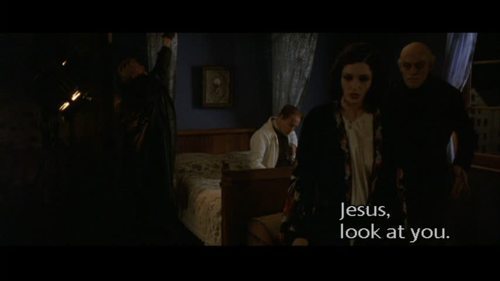
Gothic style goes hand in hand as visual representaion of Count Dracula’s release of sexualized repression, traditional family values, and the ideal gender roles. The image above is from the film Shadow of a Vampire, a film about the creation of Nosferatu. The original movie is immensly gothic as Hutter travels to the Count’s castle the expoloration of anxiety and tension. Nosferatu not only having gothic tendency while making Hutter a seamingly small and weak character to his victorian historically setting (that the towns people are afraid of). Vampires of the past belong to a gothic sexual repressive age that is not seen in more relevent movies such as Shadow of a Vampire.
The gothic style while lessen in the new movie is still relevent. Count Orlok in the film begins as a non threatening character that makes the cast a little on edge (A Gothic attribute) but he quickly becomes a physical threat and the gothic values are lost. The Castle in the film is played down as inn and the movie follows a more horror dynamic where objects become relatable. The image above desctibes the Count’s lost in sexualization. All the characters are turned away from him in disgust. The Legendary Count Draculas mental influence and provactive style is dimished to a creeper.
See my previous posting on the lost of the Original Vampire and the loss of sexual repression in the film. From an other worldy character to a more humanistic monster.
0 notes
Photo
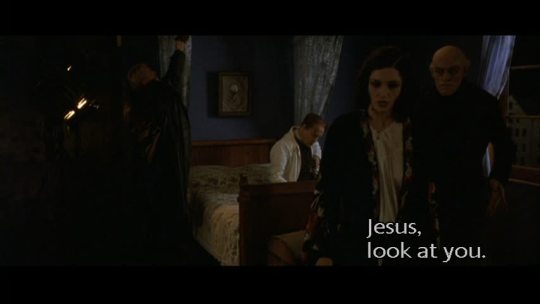
The Shadow of a Vampire directed by E. Merhige has a fitting title for the forgotten and unwanted ideals of the horror legend, Count Dracula the original vampire. The underlying deep seeded themes of the first vampire were of sexual repressiveness, promiscuity, the unknown personality, and the women as a focal drive in the story as well has her mental weakness, and the sexuality opposed to procreation. These attributes have been forced to into the shadow of the new generations vampires, as seen in Merhige’s character Count Orlok.
Count Orlok found out to be a real vampire and not an actor in the film fails to represent many of the original ideals of a vampire. Orlok being a very vocal character in the film speaks openly about his desires to his crewmembers. Speaking of a time being in love with a woman and his loneliness. Qualities that are relatable to many. His repulsiveness repels his male and female co-workers as they fear him rather than desire him. Greta the female protagonist in the movie is strong and dislikes being near Orlok. Her weakness is not from her own personality but her physical power to fight off the men that drugged her in the end. Orlok is only able to obtain Greta with the help of the director and their desire to use him as an authentic looking character.
The new horror vampire of today is a character who creates fear through physical violence and visually grotesque. The fear is no longer the attraction to the once thought hellish acts of promiscuity and pan sexuality. Today people do not fear sexuality just like Greta. People fear invincible violent force that one would hate to relate to. The vampire of the past is no longer the same as the vampire’s of today.
0 notes